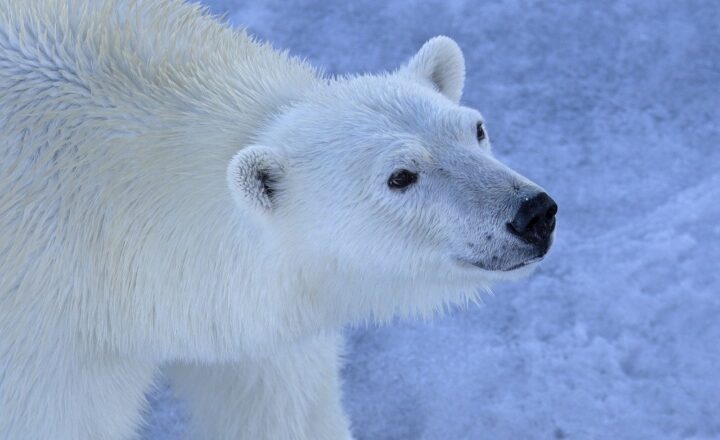A Look at the Formation of Sea Cliffs and How Erosion Shapes Coastal Landscapes
November 14, 2024

The beauty of coastal landscapes captivates millions around the globe. Among the most stunning features are sea cliffs—towering walls of rock that rise majestically above the waves and have been shaped intricately over millennia. Understanding the formation of these incredible structures provides insight into both geological processes and the dynamic nature of our planet.
1. What Are Sea Cliffs?
Sea cliffs are elevated terrains along coastlines where the land meets the ocean. They are typically composed of hard rocks such as granite, limestone, or basalt. These cliffs can vary in height from just a few meters to over 300 meters, creating dramatic vistas and habitats for diverse flora and fauna. Sea cliffs are often characterized by steep gradients, rugged textures, and a range of ecosystems both on and below them.
2. The Geological Processes Behind Sea Cliffs
Understanding how sea cliffs form starts with exploring the geological processes that contribute to their existence:
- Tectonic Activity: Sea cliffs often form as a result of tectonic uplift, where seismic activity causes sections of the Earth’s crust to rise above sea level. This can create steep, rugged landforms that will eventually meet the ocean.
- Rock Composition: The types of rocks that compose these cliffs also play a role in their formation. Harder rocks tend to resist erosion better than softer rocks, making them more likely to form steep cliffs rather than gentle slopes.
- Sea Level Changes: Historical fluctuations in sea levels, caused by climate change and glaciation periods, have also influenced coastal geography. As sea levels rise or fall, waves can either erode the base of cliffs or expose new land, shaping the landscape significantly over time.
3. The Role of Erosion in Shaping Sea Cliffs
Erosion is a crucial force in the continuous transformation of coastal landscapes, and it significantly impacts the form and structure of sea cliffs through:
- Wave Action: Waves crashing against the base of sea cliffs exert tremendous energy, gradually eroding the rock. Over time, this process can lead to undercutting, where the cliff base erodes faster than the upper ends, creating overhanging structures that can eventually collapse.
- Weathering: Weathering processes, including freeze-thaw cycles, chemical weathering, and biological weathering, weaken the rock materials in and around sea cliffs. This can lead to significant rockfalls and the gradual retreat of cliff faces.
- Sediment Transport: As waves erode cliffs, the sediments produced are transported along the coast by currents and tides, contributing to the formation of beaches and coastal landforms further down the shoreline.
4. Famous Sea Cliffs Around the World
Sea cliffs can be found in various parts of the globe, each displaying unique characteristics shaped by local geology, climate, and biological diversity. Here are a few notable examples:
- The Cliffs of Moher, Ireland: Rising over 200 meters above the Atlantic Ocean, this stunning location offers panoramic views and is a UNESCO Global Geopark. The cliffs are primarily composed of shale and sandstone, providing a dramatic meeting of land and sea.
- Giants Causeway, Northern Ireland: Famous for its unique hexagonal basalt columns formed from volcanic activity, these sea cliffs are part of a larger area that showcases fascinating geological history and vibrant ecosystems.
- White Cliffs of Dover, England: Composed primarily of chalk, these cliffs are iconic for their striking white appearance and form a significant part of the English coastline with great historical significance.
5. The Ecological Significance of Sea Cliffs
Sea cliffs provide vital habitats for numerous species of plants and animals:
- Biodiversity Hotspots: Due to the variations in microclimates and habitat niches, sea cliffs often host unique flora and fauna adapted to live on steep, rocky slopes.
- Nesting Sites: Many seabirds, such as puffins and guillemots, rely on the cliffs for nesting. The steep cliffs provide protection from predators and a vantage point for hunting and feeding.
- Habitat Diversity: The different elevations and exposure to the elements contribute to a variety of ecosystems, including coastal scrub, grasslands, and marine environments below the surface.
6. Conservation Challenges Facing Sea Cliffs
Despite their majesty and ecological importance, sea cliffs face significant environmental challenges:
- Erosion Acceleration: Climate change and rising sea levels have increased the rate of coastal erosion, leading to the loss of natural habitats and altering coastal dynamics.
- Pollution and Urbanization: Coastal development often encroaches on cliff ecosystems, leading to habitat fragmentation and increased pollution from land runoff.
- Invasive Species: Non-native species can outcompete local flora and fauna, disrupting the delicate balance of these ecosystems.
7. Conclusion: The Ever-Changing Face of Coastal Landscapes
The formation of sea cliffs represents a remarkable interplay between geological forces and natural erosion processes. As these cliffs continue to evolve, they remind us of the powerful nature of our planet and the delicate balance of coastal ecosystems. Protecting these breathtaking landscapes is critical not only for their intrinsic beauty but also for the myriad life forms they support. As we consider the impact of human activity and the changing climate, it becomes essential to adopt sustainable practices that protect our coastlines and the magnificent sea cliffs that define them.
With a deeper understanding of how sea cliffs form and the essential roles they play, we can better appreciate our coastal landscapes and contribute to their preservation for future generations.






